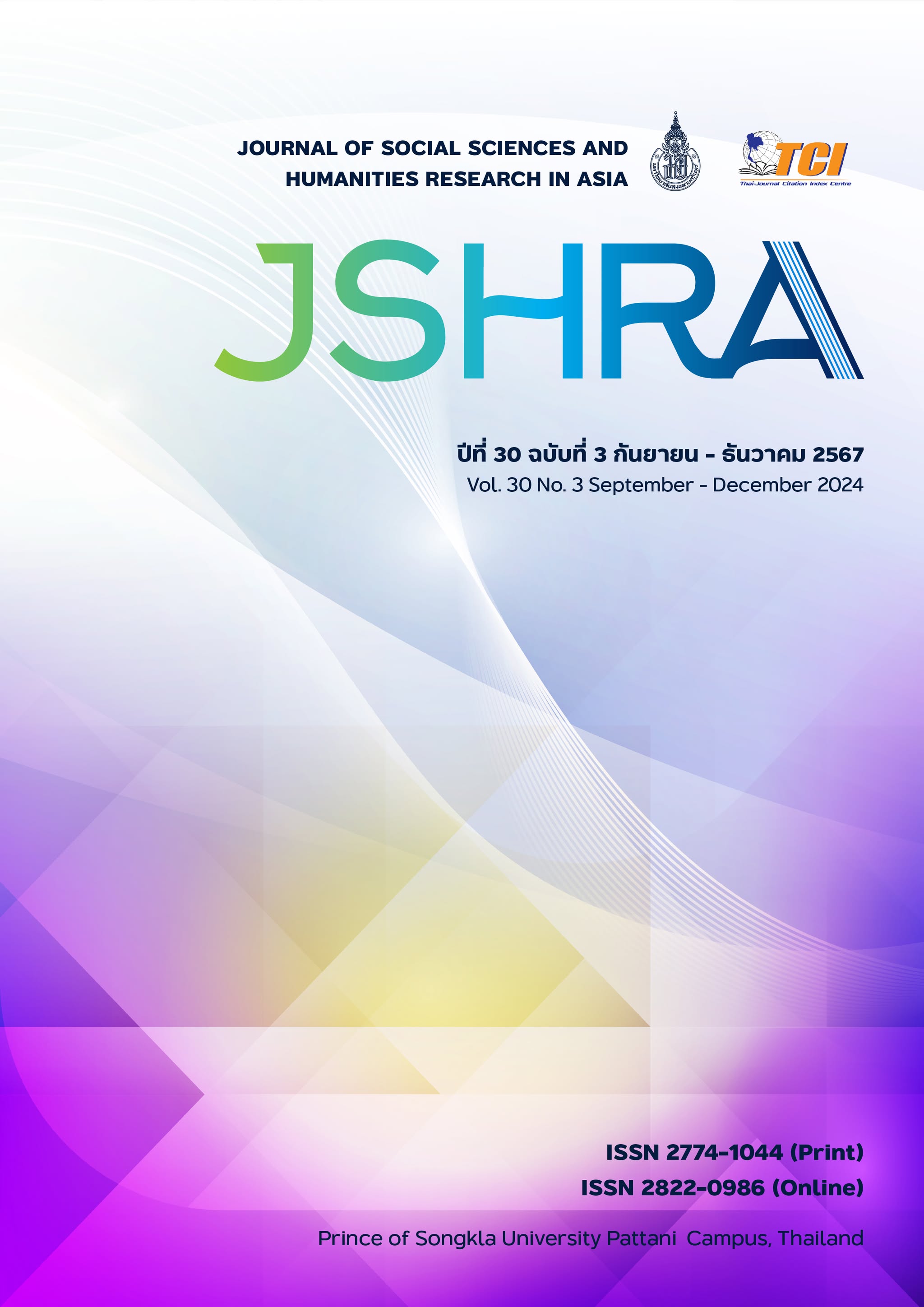The Farewell and Roles of Rare Well Chapter in "Ramakian" Play by King Rama I
Keywords:
King Rama I, Ramakian, Role, The chapter of farewel, Verse DramaAbstract
The purpose of the research “The Farewell and Roles of Farewell Chapter in “Ramakian” Play by King Rama I” was to study the Farewell Chapter and analyze its roles mentioned in the play by King Rama I. The research found that the farewell and the cause of farewell were categorized into four groups: when the characters were going to die, going for duty, being exiled, and completing the duty. The findings revealed that the chapter of farewell did not only hold the role as the composition of the play, which demonstrated the parting of the characters, but also maintained significantly the essential roles of actions, especially connecting the circumstances or characters, constructing personality, and emphasizing the feelings and characteristics to be more prominent.
References
Chunlawong, S. (1993). The society structure of the Ramakian of King Rama I (Master's thesis, Thai Language Major). Silpakorn University.
Fine Arts Department. (1997a). Rattanakosin period literature Ramakian drama: The royal writings of His Majesty King Buddha Yodfa Chulalok the Great (Vol. 1, 9th ed.). Silpa Bannakarn
Fine Arts Department. (1997b). Rattanakosin period literature Ramakian drama: The royal writings of His Majesty King Buddha Yodfa Chulalok the Great (Vol. 2, 9th ed.). Silpa Bannakarn.
Fine Arts Department. (1997c). Rattanakosin period literature Ramakian drama: The royal writings of His Majesty King Buddha Yodfa Chulalok the Great (Vol. 3, 9th ed.). Silpa Bannakarn.
Fine Arts Department. (1997d). Rattanakosin period literature Ramakian drama: The royal writings of His Majesty King Buddha Yodfa Chulalok the Great (Vol. 4, 9th ed.). Silpa Bannakarn.
Jansup, C. (2020). Ramakian: The Thai political worldviews and utopia of Rama I. Western University Research Journal of Humanities and Social Science, 6(2), 1–10. https://so04.tci-thaijo.org/index.php/WTURJ/article/view/256307/173536
Kleechaiya, P., Patthong, S., & Runra, P. (2021). Lament on loss in early Ayutthaya tales. Vannavidas, 21(1), 1–30. https://so06.tci-thaijo.org/index.php/VANNAVIDAS/article/view/245277/168862
Nissa, P. (2018). Niras Sita: Plaintive customs of the theories Sanskrit literature. Palichart Journal, 31(2), 1–16. https://so05.tci-thaijo.org/index.php/parichartjournal/article/download/158638/114917/435200
Noinimit, S. (2012). Study status of the “Ramakian” at present. Journal of International Studies Prince of Songkla University, 2(2), 1–20. https://so03.tci-thaijo.org/index.php/jis/article/view/246822/166719
Royal Institute of Thailand. (2011). Royal Institute Dictionary B. E. 2554. Bangkok, Thailand: Royal Institute of Thailand.
Ruengruglikit, C. (2016). The separations and their roles in Samutthakhot Kham Chan. Palichart Journal, 29(2), 1–29. https://so05.tci-thaijo.org/index.php/parichartjournal/article/view/69460/56395
Waraaeksiri, S. (2013). The speech of politeness and face concept with face-threatening act of characters in Ramkien’s King Rama I. Silpakorn University Journal, 33(1), 175–213. https://so05.tci-thaijo.org/index.php/sujthai/article/view/9066
Yamdate, N., & Prapandvidya, C. (2022). Rishis in Rammakian by King Rama I. Damrong Journal, 21(2), 239–270. https://so01.tci-thaijo.org/index.php/damrong/article/view/254827/171140











